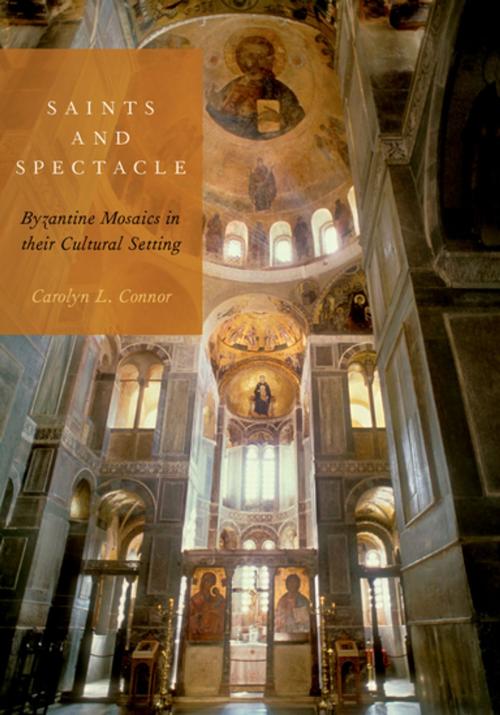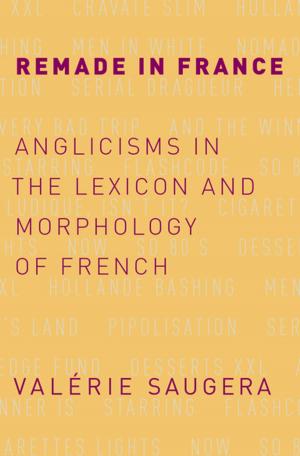Saints and Spectacle
Byzantine Mosaics in their Cultural Setting
Nonfiction, Art & Architecture, Art History, General Art| Author: | Carolyn L. Connor | ISBN: | 9780190614140 |
| Publisher: | Oxford University Press | Publication: | March 1, 2016 |
| Imprint: | Oxford University Press | Language: | English |
| Author: | Carolyn L. Connor |
| ISBN: | 9780190614140 |
| Publisher: | Oxford University Press |
| Publication: | March 1, 2016 |
| Imprint: | Oxford University Press |
| Language: | English |
Saints and Spectacle examines the origins and reception of the Middle Byzantine program of mosaic decoration. This complex and colorful system of images covers the walls and vaults of churches with figures and compositions seen against a dazzling gold ground. The surviving eleventh-century churches with their wall and vault mosaics largely intact, Hosios Loukas, Nea Moni and Daphni in Greece, pose the challenge of how, when and where this complex and gloriously conceived system was created. Using an interdisciplinary approach, Connor explores the urban culture and context of church-building in Constantinople, capital of the Byzantine Empire, during the century following the end of Iconoclasm, of around 843 to 950. The application of an innovative frame of reference, through ritual studies, helps recreate the likely scenario in which the medium of mosaics attained its highest potential, in the mosaiced Byzantine church. For mosaics were enlisted to convey a religious and political message that was too nuanced to be expressed in any other way. At a time of revival of learning and the arts, and development of ceremonial practices, the Byzantine emperor and patriarch were united in creating a solution to the problem of consolidating the Greek Orthodox Byzantine Empire. It was through promoting a vision of the unchallengeable authority residing in God and his earthly representative, the emperor. The beliefs and processional practices affirming the protective role of the saints in which the entire city participated, were critical to the reception of this vision by the populace as well as the court. Mosaics were a luxury medium that was ideally situated aesthetically to convey a message at a particularly important historical moment--a brilliant solution to a problem that was to subtly unite an empire for centuries to come. Supported by a wealth of testimony from literary sources, Saints and Spectacle brings the Middle Byzantine church to life as the witness to a compelling and fascinating drama.
Saints and Spectacle examines the origins and reception of the Middle Byzantine program of mosaic decoration. This complex and colorful system of images covers the walls and vaults of churches with figures and compositions seen against a dazzling gold ground. The surviving eleventh-century churches with their wall and vault mosaics largely intact, Hosios Loukas, Nea Moni and Daphni in Greece, pose the challenge of how, when and where this complex and gloriously conceived system was created. Using an interdisciplinary approach, Connor explores the urban culture and context of church-building in Constantinople, capital of the Byzantine Empire, during the century following the end of Iconoclasm, of around 843 to 950. The application of an innovative frame of reference, through ritual studies, helps recreate the likely scenario in which the medium of mosaics attained its highest potential, in the mosaiced Byzantine church. For mosaics were enlisted to convey a religious and political message that was too nuanced to be expressed in any other way. At a time of revival of learning and the arts, and development of ceremonial practices, the Byzantine emperor and patriarch were united in creating a solution to the problem of consolidating the Greek Orthodox Byzantine Empire. It was through promoting a vision of the unchallengeable authority residing in God and his earthly representative, the emperor. The beliefs and processional practices affirming the protective role of the saints in which the entire city participated, were critical to the reception of this vision by the populace as well as the court. Mosaics were a luxury medium that was ideally situated aesthetically to convey a message at a particularly important historical moment--a brilliant solution to a problem that was to subtly unite an empire for centuries to come. Supported by a wealth of testimony from literary sources, Saints and Spectacle brings the Middle Byzantine church to life as the witness to a compelling and fascinating drama.















